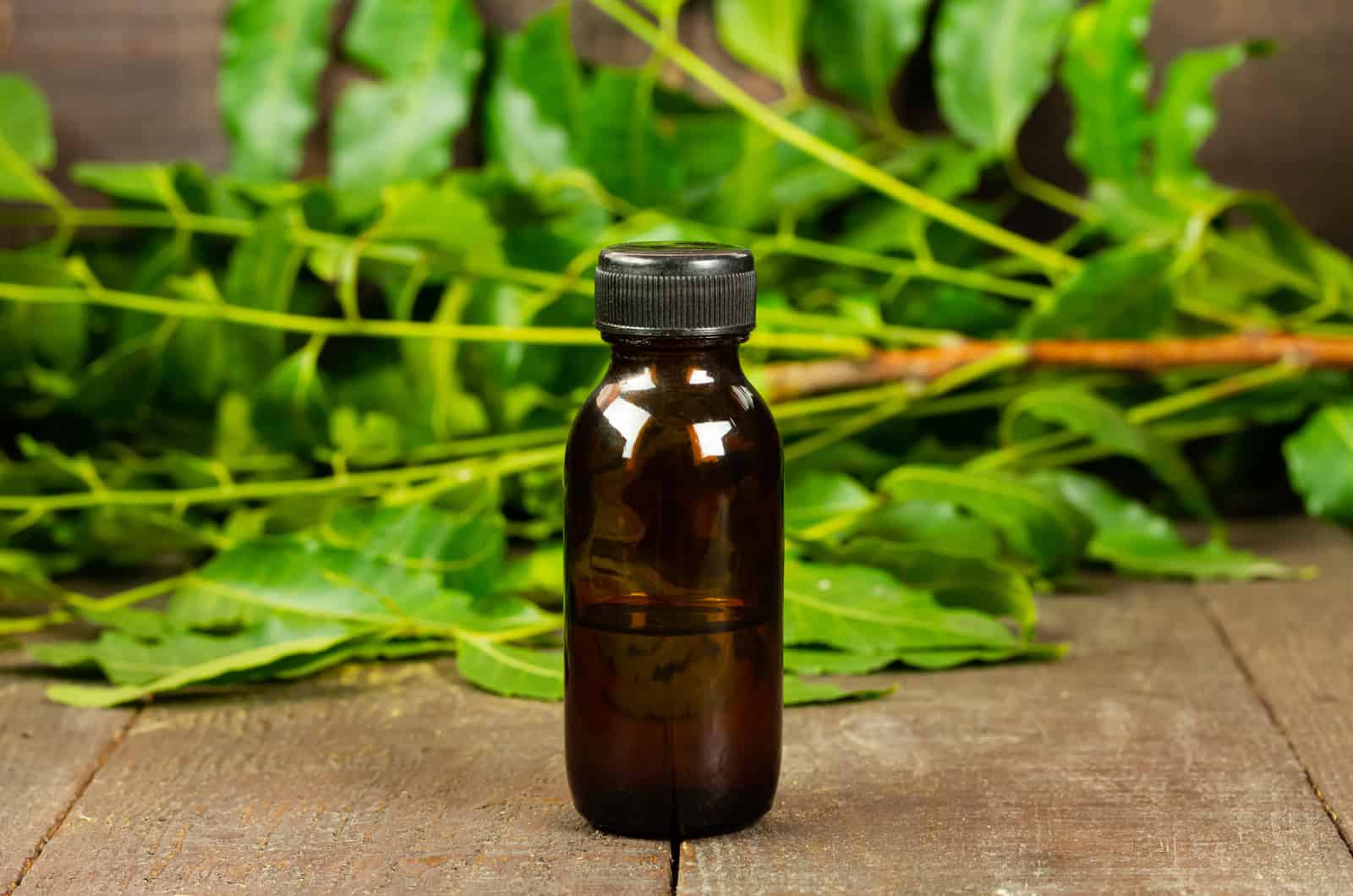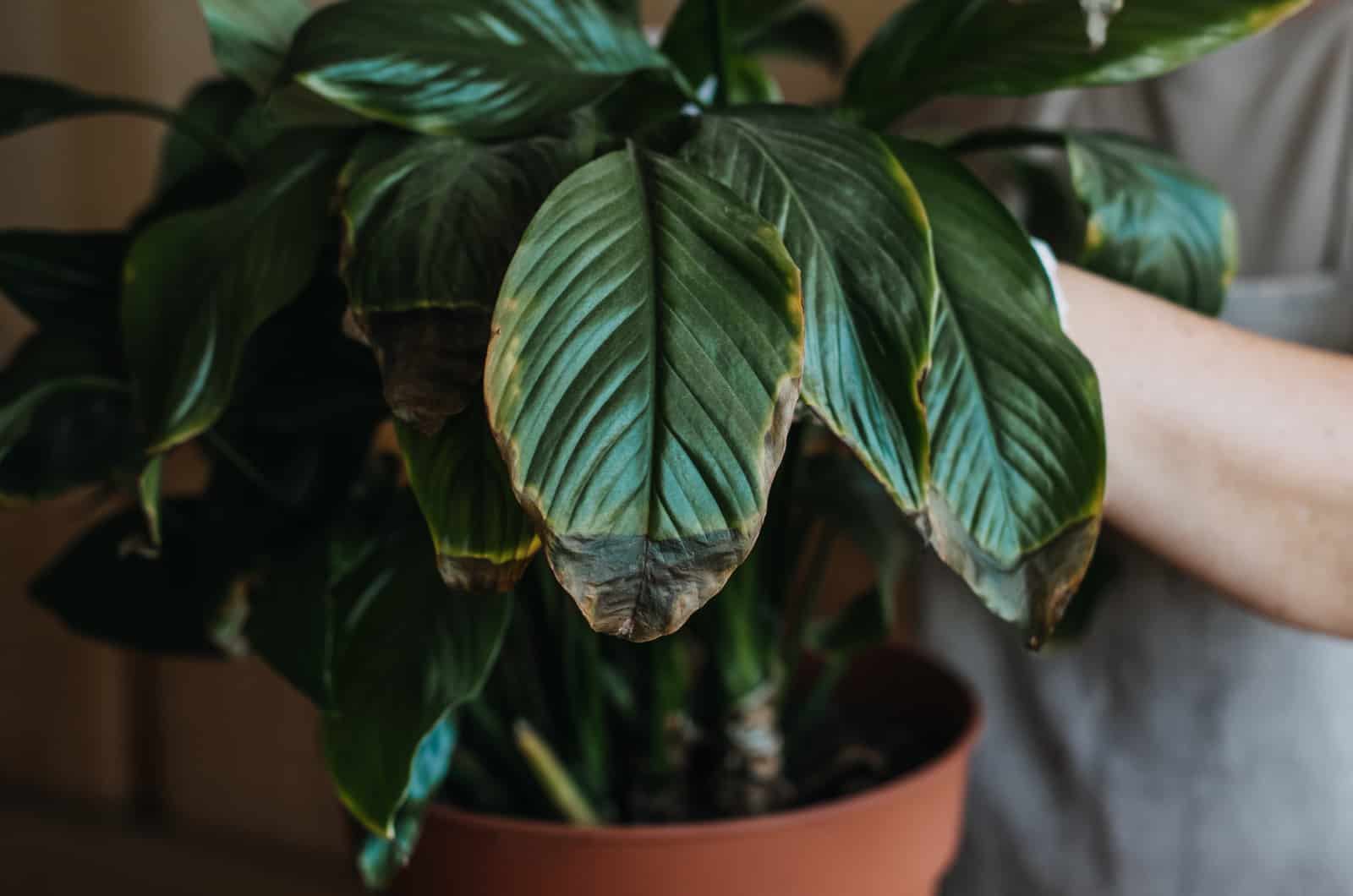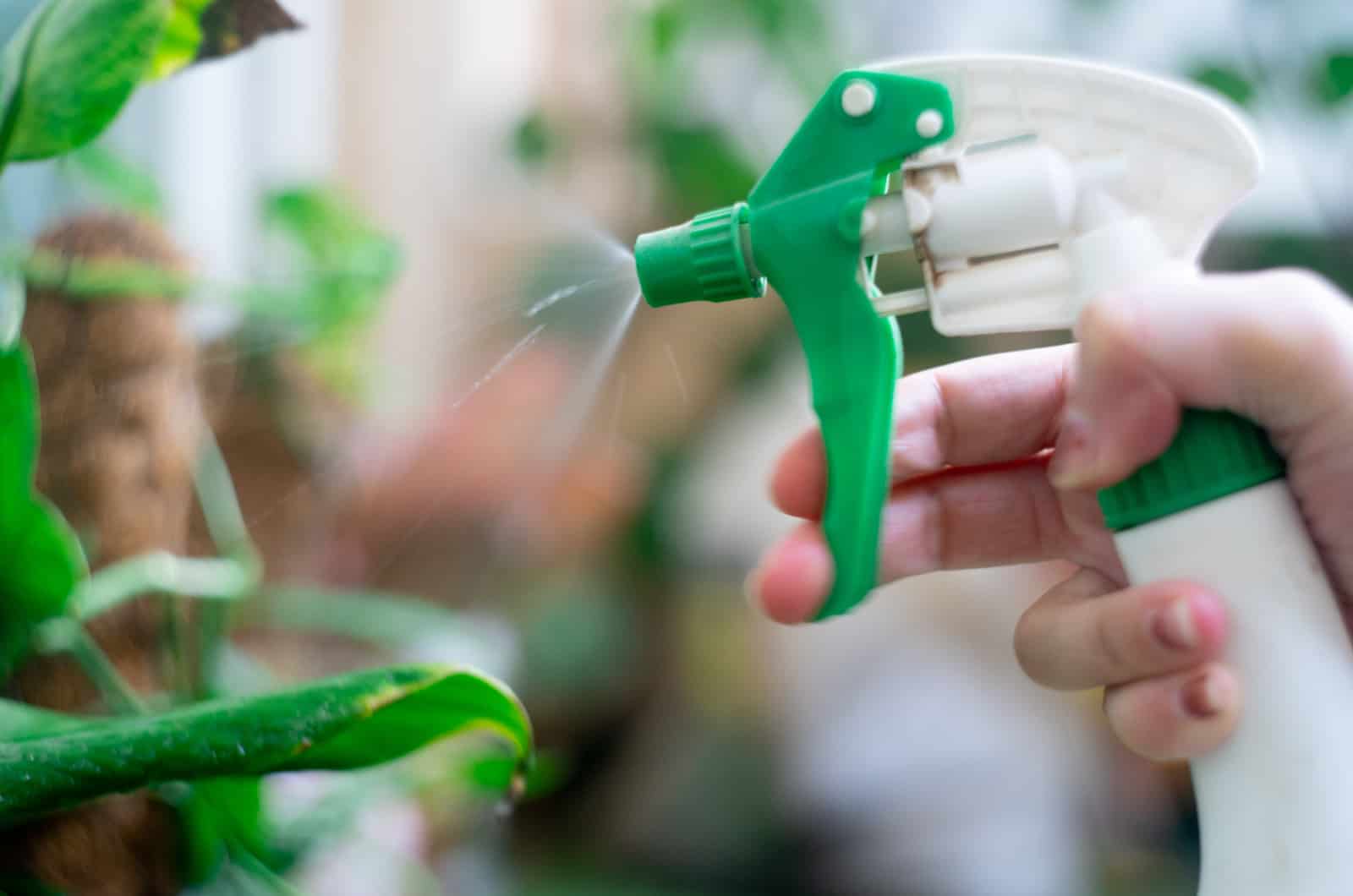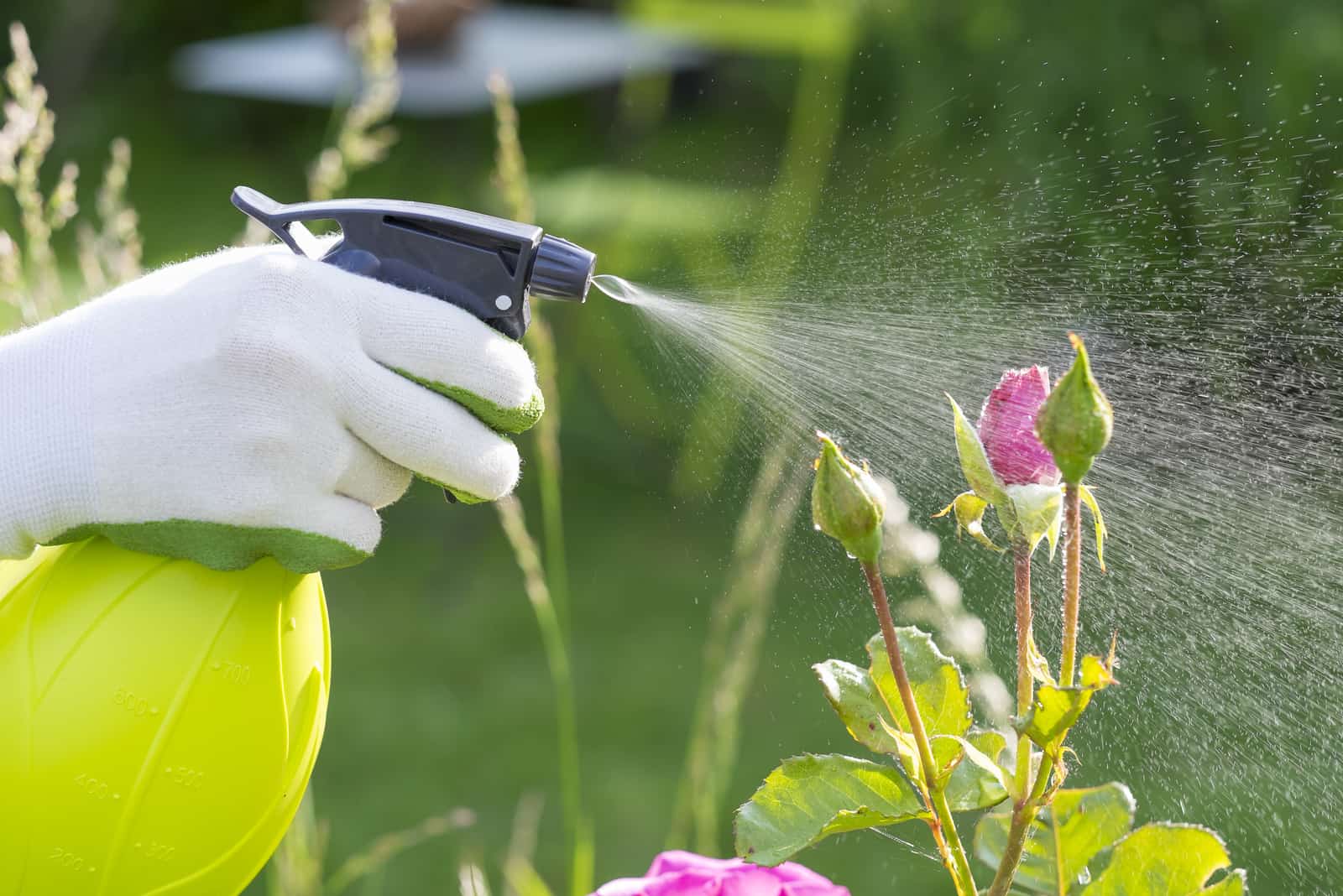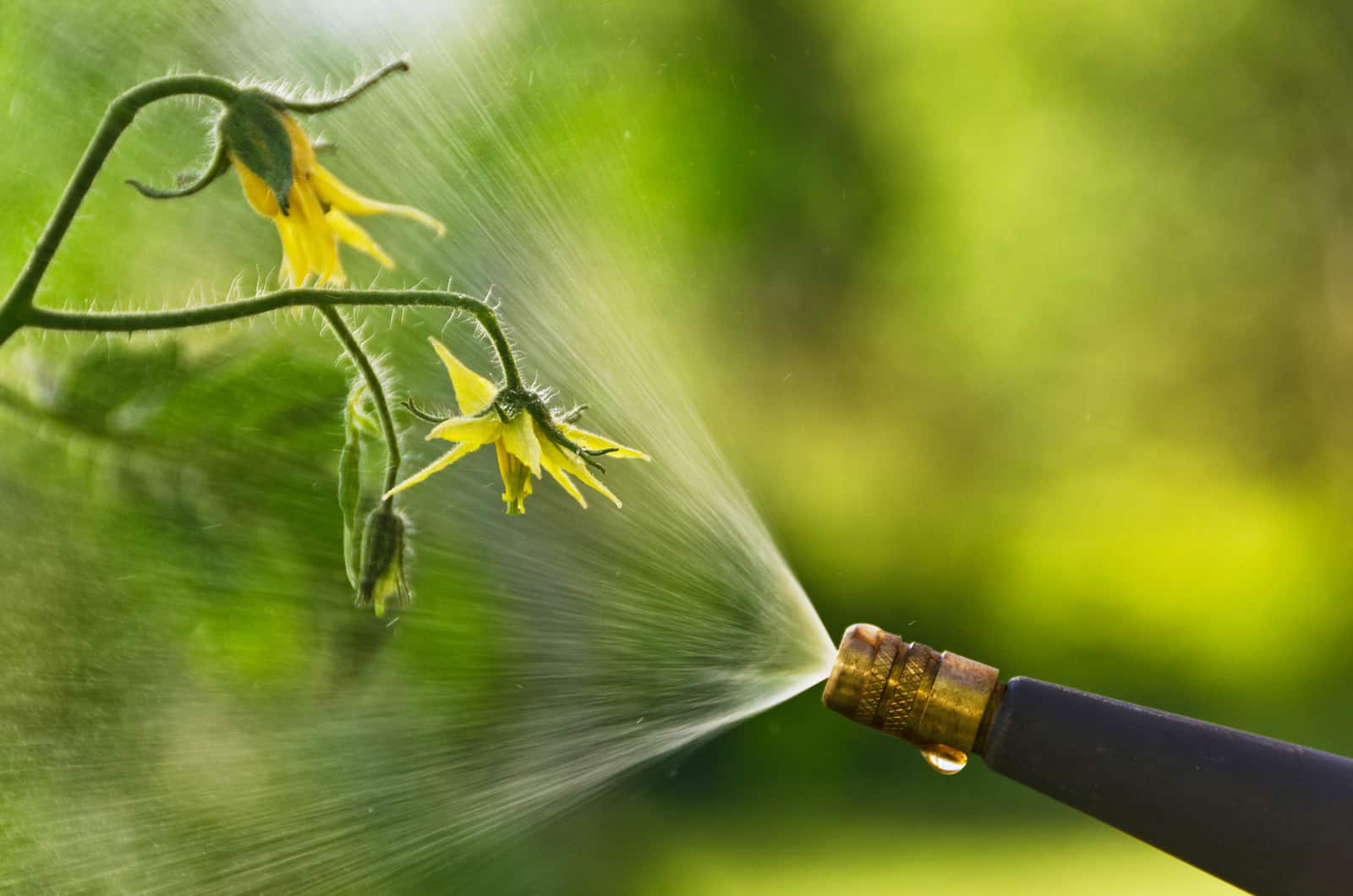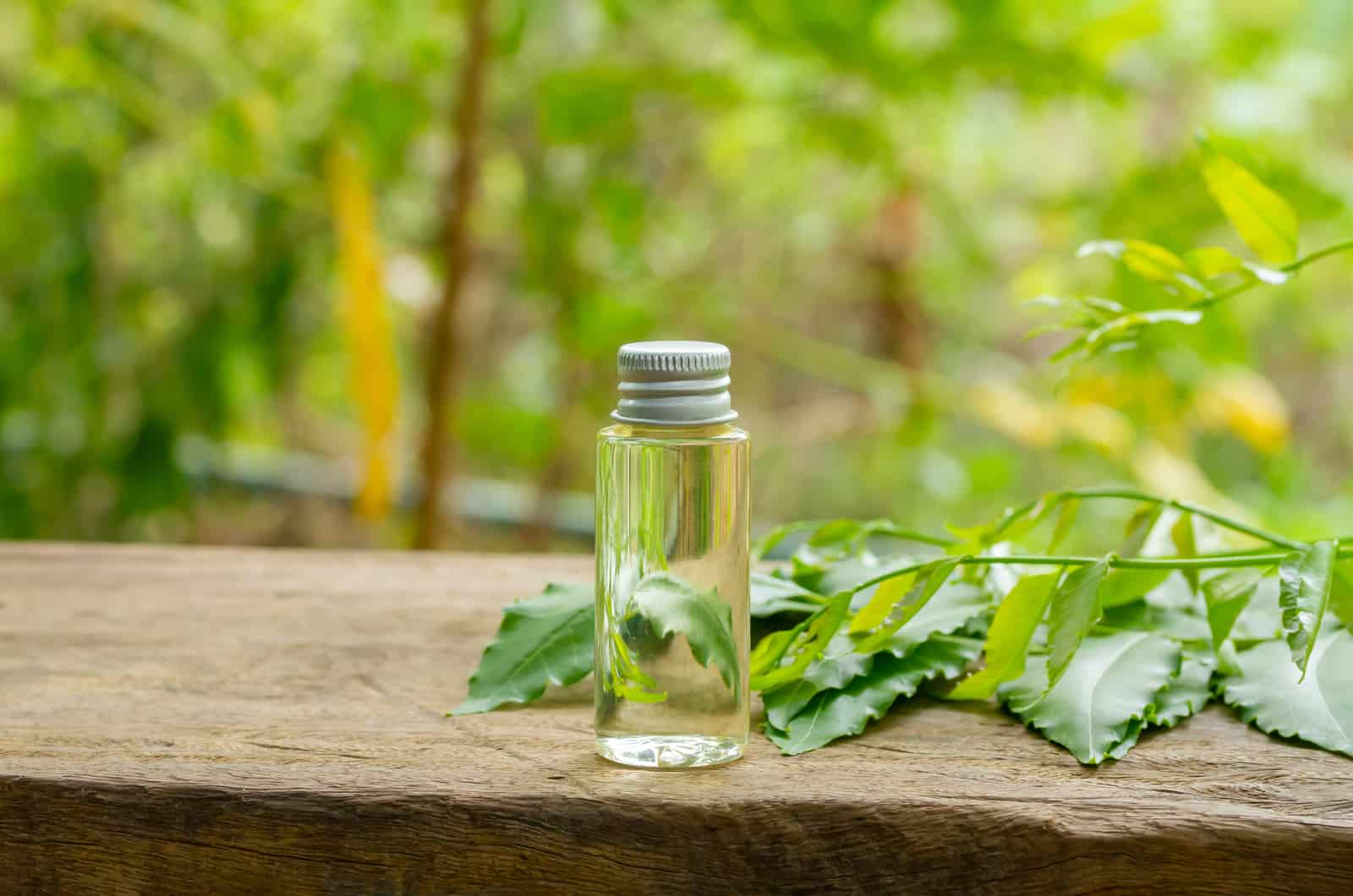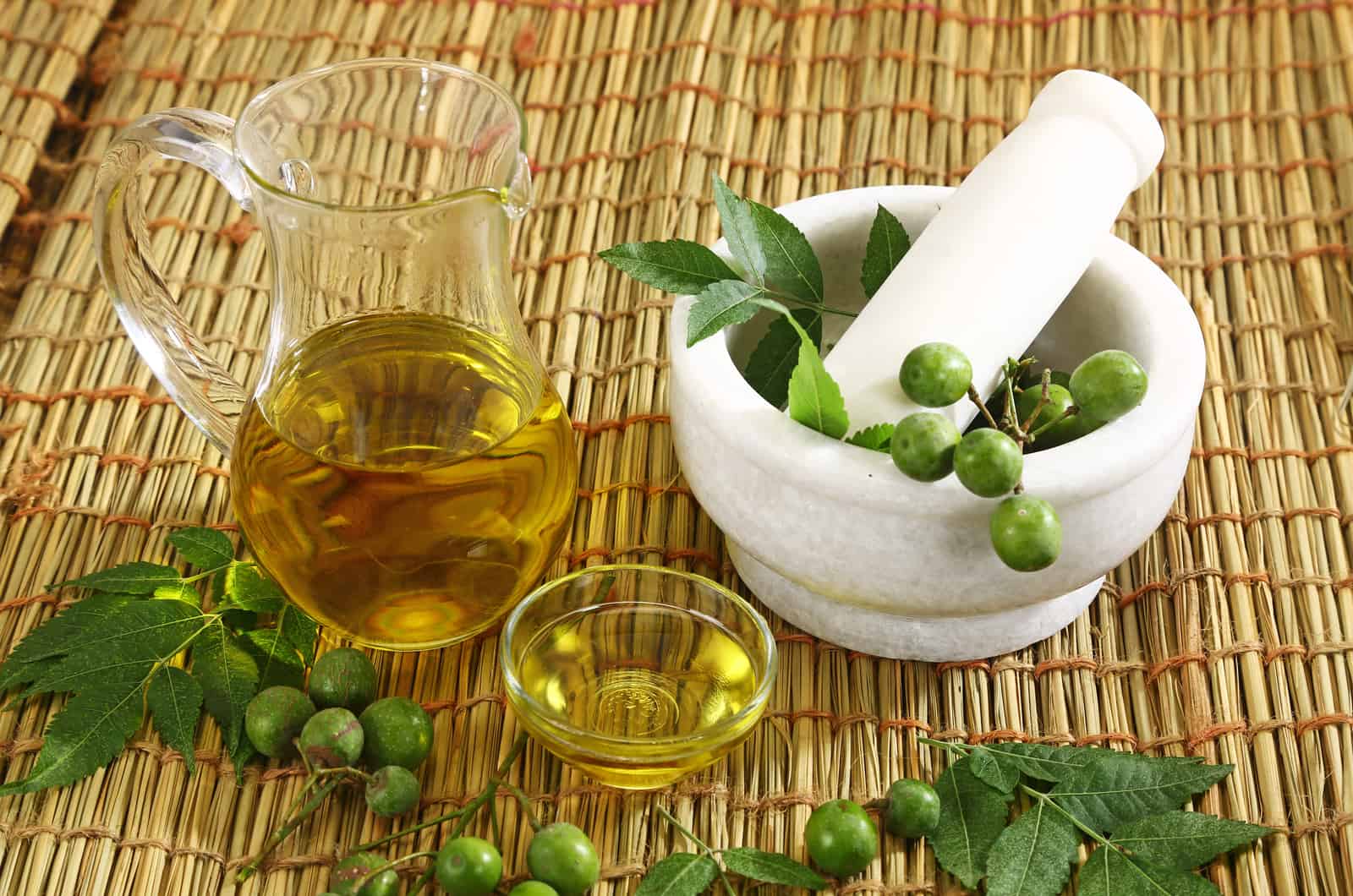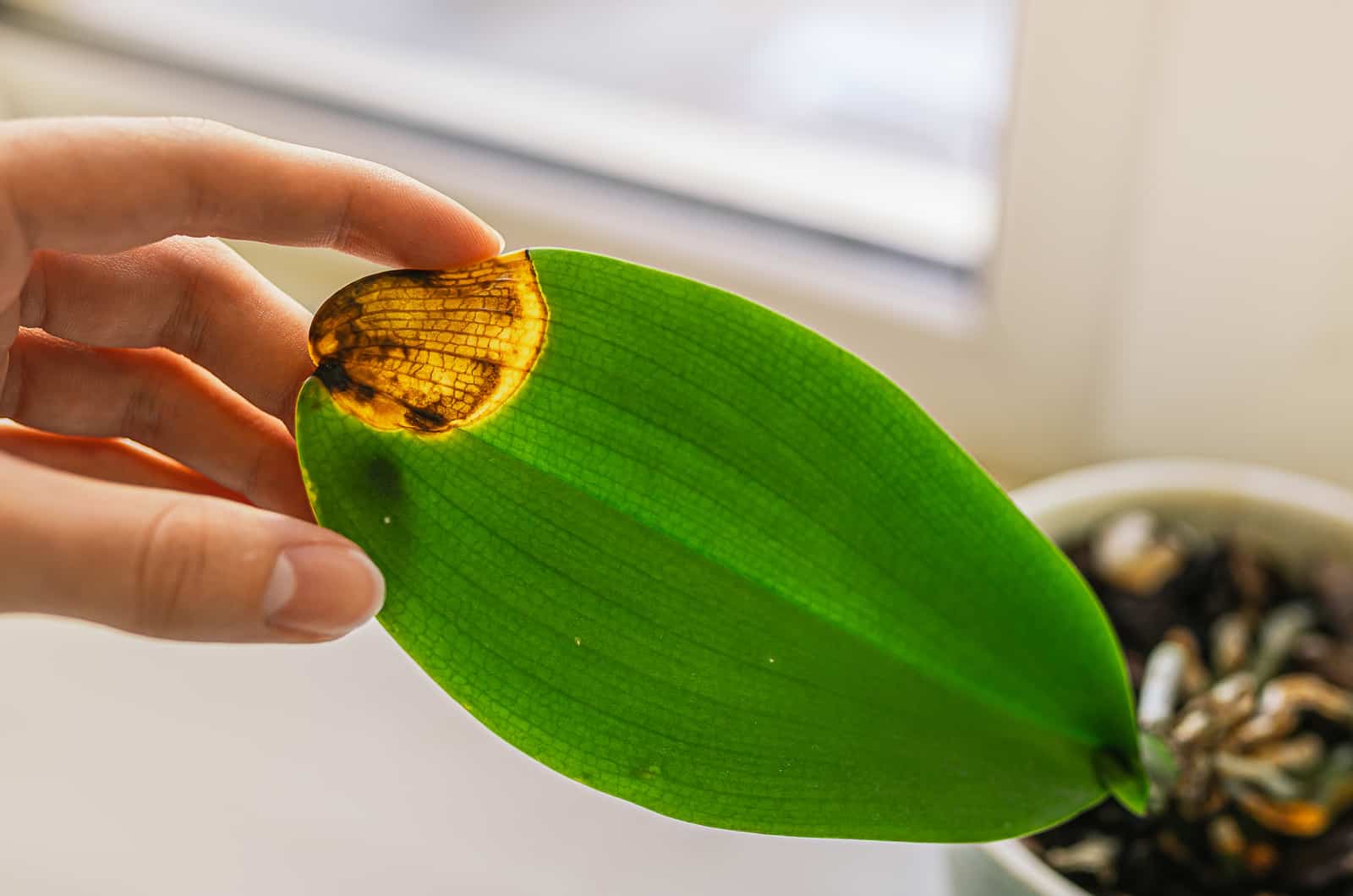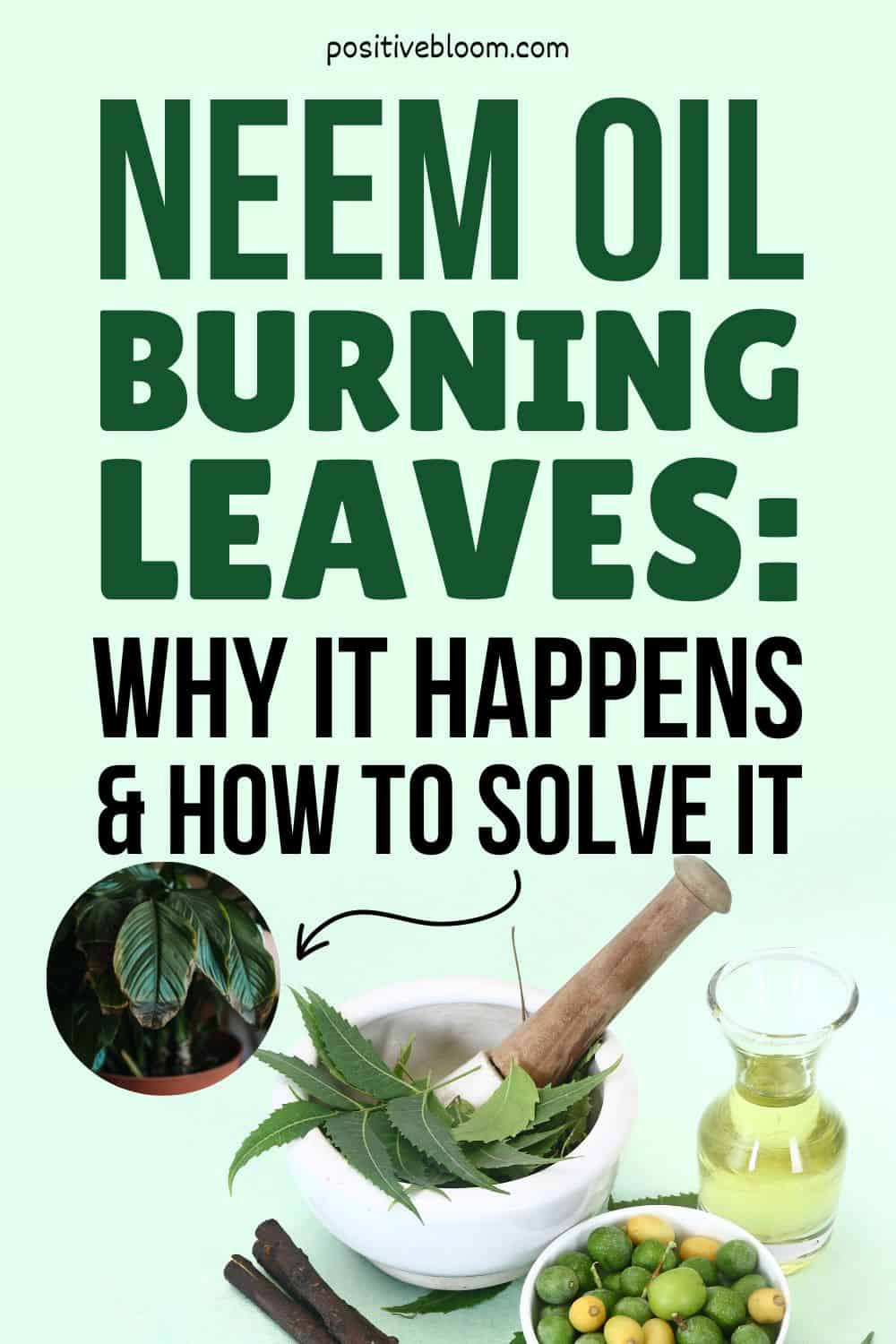Azadirachta indica (neem tree) seeds contain azadirachtin as an active ingredient, which is used to make neem oil, a common insecticide.
However, this plant is not just used for its azadirachtin content, but also in the cosmetic industry to make soaps or even toothpaste.
Azadirachtin is a natural insect repellent that can easily repel a variety of pests.
That’s why neem oil is so popular nowadays, but many growers face another issue.
They have reported leaf burns and concluded that the leaf burns appeared after applying neem oil.
So, is neem oil burning leaves? Let’s find out why it happens and how to solve the issue.
Neem Oil Burning Leaves: Why It Happens
If used inappropriately, neem oil can cause severe damage to some parts of your plants, including the leaves.
What causes this to happen in the first place?
Neem oil works by covering plants with an oily substance that pests consume when they feed on plant foliage.
However, if you apply this oil during the warmest parts of the day it will dry too fast due to the sun exposure and cause leaf burns.
Furthermore, if you use more neem oil than you should it can limit a plant’s respiratory abilities.
In other words, you are suffocating your plants.
Let’s get into details!
High Temperatures
If you apply neem oil when the temperatures are high, it will burn the leaves of your plants.
A tricky thing about hot days and neem oil is that even morning temperatures, although lower, can cause burns.
However, it won’t cause severe burns and instantly kill the plant, but there’s no need to risk it.
Wrong Time Of Day
I mentioned above that the time of day when you apply neem oil plays a role in its effects. For example, temperatures are higher and the sun is stronger at noon.
When the direct sun touches neem oil, the oil temperature increases and burns the leaves.
The best way to understand this is by considering the process of cooking certain foods. When you heat vegetable oil and put it on, for example, potato slices, it immediately leaves traces on the slices.
The same happens with neem oil, too much heat, and leaves.
Applying Too Frequently
Leaves have numerous small openings called stomata, which allow the plant to take in oxygen.
If you apply neem oil too frequently it will gradually fill these openings and suffocate the plant.
Luckily, neem oil will quickly dry up and decompose in about a week and the stomata will open again.
The outcome will undoubtedly be negative if you keep applying neem oil and don’t let it dry properly.
Incorrect Ratio
Both the frequency of using neem oil and the dosage are important. By dosage, I mean how much neem concentrate you use for the neem oil solution.
For example, for a half-gallon of water you will need two teaspoons of liquid soap and one tablespoon of neem oil concentrate.
If you put 3 tablespoons of neem oil concentrate in a half-gallon spray bottle, for example, the concentration of neem oil would be so high that it results in the plant leaves burning.
How To Solve The Problem
I highly recommend including neem oil as a part of your plant care routine.
Although some problems like burns may occur, if you adjust everything and start using neem oil properly, you shouldn’t have any issues.
Here is what you should do.
Use A Proper Recipe
You may think you can cheat a little bit with recipes and it won’t affect the outcome much.
That may be partially true, but I always recommend staying on the safe side and using the quantities of ingredients according to the recipe.
If you add a little bit more neem oil than you should, it doesn’t necessarily mean you’ll kill your plant, but there’s just no need to risk it and the ratio exists for a reason.
There are no excuses; there are many things that can help you measure the ingredients.
For example, there are affordable devices that can help you, such as measuring spoons and even kitchen scales.
Follow The Instructions
I am, or rather, I was, a person who hates reading instructions.
I used to read the instructions once and then create my own instructions so that I didn’t have to read them again!
I did this happily until one manufacturer changed some ingredients and the instructions on the package, so ‘my own old ones’ were useless and caused damage to my plants!
Ever since then, I always carefully read instructions before using new products, and this includes neem products.
Some neem products contain other ingredients, such as essential oils.
I am an experienced gardener, and I like trying out new products, but I always check how to use a product and how to mix ingredients properly.
Choose The Right Time
If you are an early bird and like to finish as many things as possible in the morning, you’ll have to remove spraying neem oil from your list.
During summer, 5:00 AM may seem like a great time to get up, watch the sunrise, and spray your plants with neem oil.
However, the oil may dry until the hottest part of the day and then burn the leaves of your plant.
Do not use neem oil on windy days unless you want to get oil all over yourself.
I suggest you wait until the sun starts to set because visibility is still perfect, but the temperatures drop enough so that ir doesn’tt hurt your plants.
Avoid Spraying Sensitive Plants
Neem oil works great on tomatoes, for example, but some plants don’t get along well with neem oil.
There are two types of plants that are sensitive to neem oil.
1. Herbs: thyme, oregano, parsley, dill, cilantro, and basil are all sensitive to neem oil. It can burn their leaves, so I recommend insecticidal soap in this case.
2. Leafy greens: the leaves of leafy greens such as spinach and lettuce are fragile, and neem oil can quickly cause leaf burns.
Neem oil may affect the new growth of plants in their juvenile stages.
As far as houseplants are concerned, there are no records that any are affected by neem oil.
Be Patient
The world is changing – we live fast and very often lose our patience if something takes a long time.
After you spray neem oil, you really need to be patient.
Neem oil usually takes a week to function because the azadirachtin needs time to disrupt the cells inside soft-bodied insects.
However, if you do become impatient and keep spraying neem oil again and again, you risk coating your plants in too much oil and unintentionally damaging them.
If you want to take control of a pest problem in a short period of time, I suggest you combine neem oil and insecticidal soap for a couple of weeks until you see signs of improvement.
If you decide to use neem oil foliar spray alone, apply it approximately once a week.
What is neem oil used for?
Neem oil has many benefits, which is why it is approved as a biopesticide. Neem oil can also serve as a fungicide, nematode eliminator, and fertilizer.
You can just use neem oil as a preventive measure as well.
Let’s get into details!
As Insecticide
After applying neem oil, the plant will absorb the substances neem oil contains then transmit those substances to the pests that use the plant as a food source.
Neem oil actually kills the pests and stops them from progressing to the next stage of development.
Neem oil has the potential to kill insects at any stage of development, including larvae.
Furthermore, regardless of whether you produce plants in pots or your yard, this natural insecticide will aid in the destruction of insects.
You can control many pests by using neem oil, such as aphids, scales, thrips, spider mites, mealybugs, whiteflies, fungus gnats, and also caterpillars and leafhoppers.
Some sneaky pests hide on the undersides of the leaves, but neem oil also solves that issue.
If you’re concerned about how neem oil impacts pollinators or beneficial insects, there is no need to worry. It rarely has any effect on bees, earthworms, or ladybugs.
However, don’t experiment; when you spot beneficial insects, delay spraying neem oil for a while.
For Fungus
Neem oil serves as a fungicide and may eliminate the causing factor responsible for powdery mildew, which promotes fungal diseases on both landscaping and indoor plants.
It also kills a wide range of bacteria, making it one of the most excellent treatments for your plants’ health.
However, don’t expect neem oil to eliminate mold infections quickly. Bear in mind that this type of fungicide won’t help with severe infections.
You can also use neem oil as a soil drench.
For Fertilization
We use the term organic fertilizer for this form of plant feeding. It has a high concentration of three essential nutrients for healthy plant growth: nitrogen, phosphorus, and potassium.
A high nitrogen concentration in the soil is one of the most typical issues that gardeners face. However, neem addresses this issue by reducing nitrogen release.
This is very beneficial because some fertilizers have a higher nitrogen content than others, and these fertilizers become ideal when combined with neem oil.
Although neem oil slowly releases nutrients into the soil, it does not leach hazardous metals.
As A Preventive Measure
Neem oil works great as a preventive measure. Don’t wait for infestation and apply neem oil regularly instead. You don’t have to use neem oil spray just for the leaves, you can spray it on the entire plant.
For The Removal Of Nematodes
When you cultivate plants for a long time, you become aware of many concerns that often arise.
Nematodes are a well-known example of such an issue. These bugs devour the roots slowly and can be deadly to plants.
Because most chemical insecticides are inefficient, especially if nematodes spend a long time in the root system, eliminating them can be challenging.
When neem oil decomposes, the chemicals that kill nematodes activate right away, so it’s bye-bye nematodes!
Is neem oil safe for plants?
It’s essential to understand why you should get rid of or prevent garden pests.
First, garden pests feed on plant leaves. Then they make holes in the leaves and absorb nutrients from the plant. Additionally, they can transmit diseases that can kill your plant.
Pests like spider mites, mealybugs, and aphids steal nutrients from plants. On the other hand, pests like hornworms, which mainly affect plants from the nightshade family, rip through plants.
Neem oil creates a coating that, once dry, is undetectable to human sight.
When insects start chewing on plant leaves, they unknowingly absorb neem oil. In other words, pests absorb azadirachtin into their bodies, and that affects their cells, so they eventually die.
You don’t have to worry about neem oil affecting the quality of your crops. To put it another way, neem oil is perfectly safe to use during all growth stages and right up to harvest. It can also be used as pest control during flowering.
However, neem oil should not be consumed by humans or pets. It is hazardous if swallowed fresh as it may disintegrate in the digestive tract.
On the other hand, it will have no effect on your vegetables. To put it another way, neem oil will disintegrate before the crop is consumed.
Can You Apply Too Much Neem Oil?
As you may know, we provide plants with carbon dioxide and they give us oxygen in exchange. That is how photosynthesis works.
However, plants need energy to grow so they also take in oxygen. To accomplish this, plants grow stomata, which are small openings on their leaves.
This feature allows plants to breathe and take in oxygen.
There are several things to pay attention to when it comes to neem oil and the amount you should use.
None of these things include applying too much neem oil.
The first thing is related to the neem oil, water, and liquid soap ratio. You should follow the instructions and always mix the right amount of each ingredient.
The second thing is applying neem oil too often. If you apply neem oil frequently, the openings, or stomata, will close up and restrict oxygen intake.
Therefore, if you have the proper ratio of ingredients in neem oil spray and you apply it every 4-7 days, you can’t apply too much oil at once. It will dry out and the plant will breathe undisrupted until the next time you apply neem oil solution.
FAQs
What happens if you use too much neem oil on plants?
You can’t use too much neem oil on plants. However, you can put too much neem oil concentrate when diluting it or apply it too frequently. By sticking to the instructions and a proper schedule, you can spray the quantity you want during each single usage.
How long does neem oil take to dry?
Neem oil contains azadirachtin as an active ingredient. One of the features of this substance is that it breaks down quickly in soil and water. When it comes to the plant leaves, azadirachtin will break down in about 3-4 days, which is how long it takes to dry.
How often should you use neem oil?
The frequency of using neem oil mainly depends on the reasons you use it. For example, if you are using neem oil as prevention, you can apply it twice a month. On the other hand, if you have a pest infestation and you decide to use neem oil as a pesticide, you can apply neem oil spray every 4-7 days.
Wrapping Up
Although neem oil has many benefits, it can cause issues when handled inappropriately.
For neem oil, factors such as temperature, time of the day, preparation, and frequency play the main roles in its efficiency.
So if neem oil burning leaves of your plants, you now you have all the answers and how to fix the issue. Good luck!
Until next time!
Like this post? Share or pin it for later!

